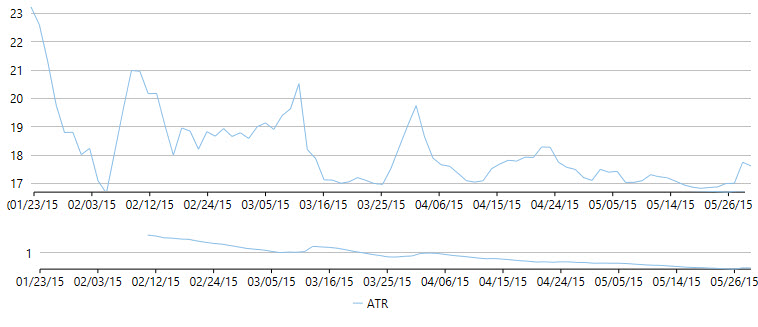Average True Range (ATR) is a technical indicator for measuring the volatility of an asset. It does not provide an indication of the price trend, but of the degree of the price volatility. It is typically based on 14 periods, and could be calculated intra daily, daily, weekly or monthly basis. Stocks having high volatility will have a higher ATR, while low volatility stocks will have a lower ATR.
FinancialChart also enables you to fetch the calculated ATR values at run-time using GetValues() method. This can help in creating alerts in application or maintaining logs while working with dynamic data.
The following code snippet creates an instance of the ATR class to use Average True Indicator. Also, the sample uses a class DataService.cs to get data for the financial chart.
